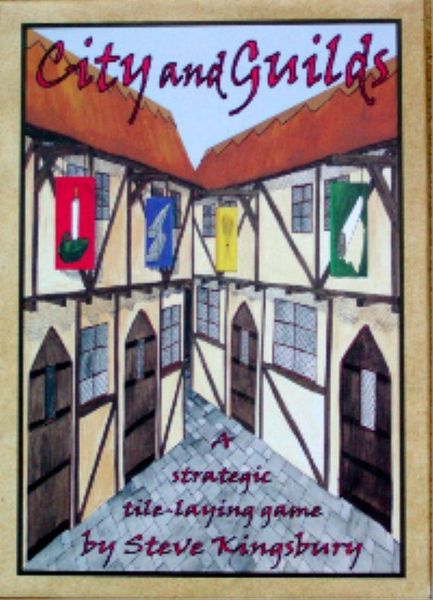City and Guilds (2004) Board Game
City and Guilds is a board game released in 2004, designed by Markus Welbourne and published by JKLM Games. The game falls under the categories of city building and medieval themes, where players compete to gain influence and control over different areas. With mechanics such as area majority and tile placement, City and Guilds offers a strategic gameplay experience for 3 to 5 players, aged 8 and above.
Game Components of City and Guilds
How To Setup City and Guilds
To set up the game, players first create the city by drawing and placing tiles to form irregular city blocks. Each player starts with a hand of three tiles and three face-up tile choices. Players must ensure that the first tile is not adjacent to any other tile, while subsequent tiles must be adjacent to previously placed tiles, allowing for crossing the street.
Gameplay Mechanics and Game Objective
Player Experience
Playing City and Guilds involves a mix of strategic planning and tactical decisions. Players need to balance the placement of tiles to control city blocks with the placement of workers to gain influence within the guilds. The game is relatively quick, lasting under an hour, but it can feel abstract and dry, especially with a larger number of players.
Pros
Cons
Personal Thoughts on City and Guilds
City and Guilds is a game best suited for players who enjoy strategic tile-laying and worker placement mechanics. It is recommended for smaller player counts, ideally 2-4 players, to enhance the analytical and manipulative aspects of the game. While it may not captivate every player due to its abstract nature, it offers a unique blend of strategy and tactical decision-making that will appeal to fans of games like Carcassonne and other area control games.
We are supported by our audience. When you purchase through links on our site, we may earn an affiliate commission, at no extra cost for you. Learn more.

